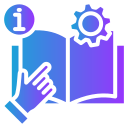Learning a new language is a transformative journey that opens doors to diverse cultures, career opportunities, and personal growth. While the process can be challenging, harnessing effective strategies can make language acquisition smoother and more enjoyable. This guide presents valuable techniques that cater to different learning styles, ensuring that anyone can make measurable progress in mastering a new language.
Building a Strong Foundation
Understanding the Alphabet and Pronunciation
Familiarizing yourself with the alphabet and sounds of a new language is the first step towards effective communication. Pronunciation often differs dramatically from English, and neglecting this early on can hinder your ability to be understood. Spend time listening to native speakers, repeating after them, and using phonetic guides where available. Mastering the basic sounds early helps ensure that you develop correct habits and can recognize words as they are spoken, making listening and speaking far more intuitive.
Essential Vocabulary Acquisition
Before delving into complex structures, focusing on high-frequency vocabulary is key. By learning commonly used words and phrases, you provide yourself with the tools to navigate everyday conversations. Start with greetings, numbers, question words, and common verbs. Use flashcards, spaced repetition apps, or engage in short daily exercises to reinforce your memory. A strong vocabulary base not only facilitates comprehension but also boosts your confidence as you begin to express yourself.
Grasping Basic Sentence Structure
Each language has unique grammatical rules and sentence structures. Early exposure to simple sentence construction—such as subject-verb-object order, word gender, and verb conjugation—lays the groundwork for effective communication. Practice forming simple questions and statements, paying attention to patterns. Regular drills and correction from reliable sources or native speakers help solidify these foundational elements in your long-term memory.

Immersive Practice Techniques
Exposure is one of the fastest ways to internalize a new language. Even without traveling abroad, you can create a language-rich environment at home. Change your device settings, label household items, and listen to radio stations or podcasts in your target language. Such constant interaction with the language helps your brain acclimate to its nuances naturally, facilitating passive and active learning even during downtime.

Effective Memory Techniques
Utilizing Spaced Repetition
Spaced repetition leverages the psychological principle that reviewing information at increasing intervals improves long-term retention. Employ flashcard systems or dedicated language apps that automatically schedule reviews just before you might forget key information. This targeted practice maximizes memory efficiency, making it easier to retain vocabulary and grammatical rules over time.
Creating Mnemonics and Associations
Mnemonic devices and associations help make unfamiliar words more memorable by linking them to familiar concepts, images, or sounds. For example, invent vivid stories or mental pictures using new vocabulary, or find English words that sound similar to their foreign counterparts. These mental shortcuts serve as effective recall triggers and can dramatically reduce the effort needed to memorize difficult or abstract language elements.
Chunking Information for Easier Recall
Breaking information into manageable chunks aids in understanding and memorization. Instead of learning isolated vocabulary, group words by category, context, or function. For grammar, focus on one structure at a time and practice it through multiple contexts. This method mirrors the way our brains naturally organize information and enables more efficient retrieval during conversation.
Incorporating Technology and Apps
Mobile apps such as Duolingo, Babbel, and Memrise offer personalized learning paths that make studying flexible and fun. They incorporate gamified features, quick lessons, and progress tracking, which encourage regular practice. Most apps adjust to your strengths and weaknesses, ensuring you spend more time improving on areas that need attention, which leads to more efficient learning outcomes.
Previous
Next
Developing Consistency and Motivation
Defining clear, measurable, and realistic objectives provides direction and structure to your learning process. Whether aiming to hold a basic conversation, understand a song, or write a brief letter, setting milestones gives a sense of accomplishment along the way. Tracking your progress toward these goals helps maintain motivation, as each completed objective marks tangible improvement.

Engaging with Cultural Context
Idioms and unique expressions reflect a culture’s history, values, and humor. Learning these not only enhances your fluency but also allows you to communicate more naturally and confidently. Whenever you come across an unusual phrase, investigate its origin and usage. This deeper understanding provides insight into the thought processes and traditions of native speakers.

Every learner faces setbacks, ranging from pronunciation difficulties to forgetting vocabulary or feeling overwhelmed by grammar. Recognize these challenges as a normal part of language acquisition. By anticipating likely barriers, you can develop strategies to manage them, whether by seeking help, adjusting your study approach, or ensuring adequate practice in problem areas.

